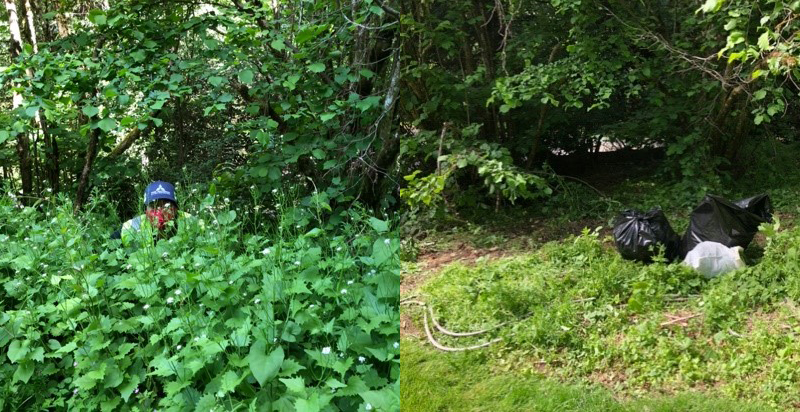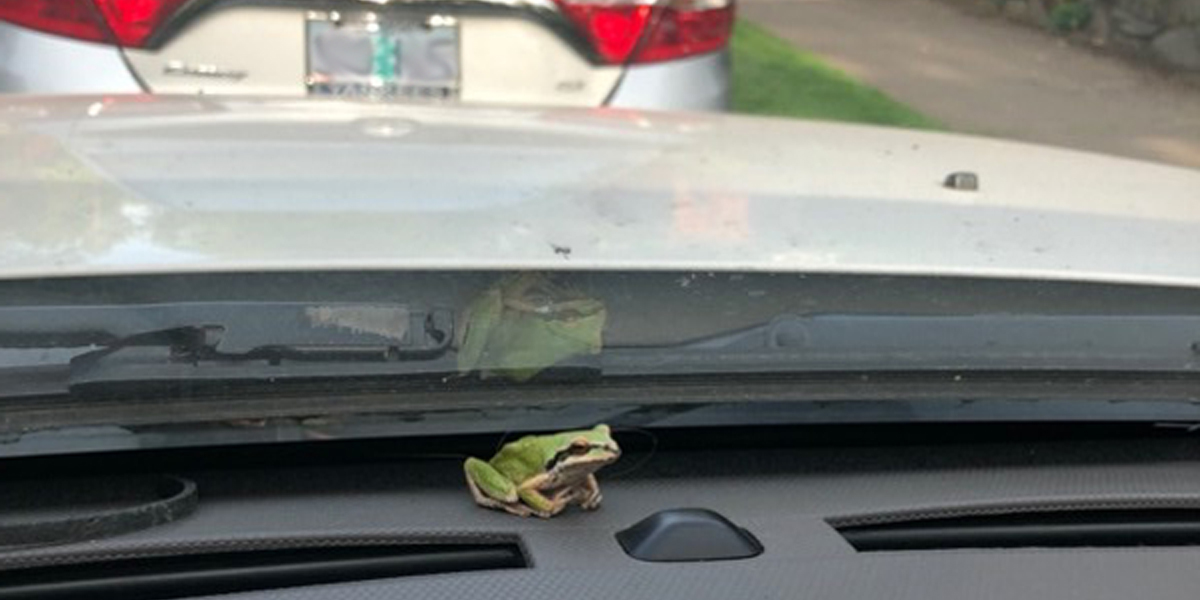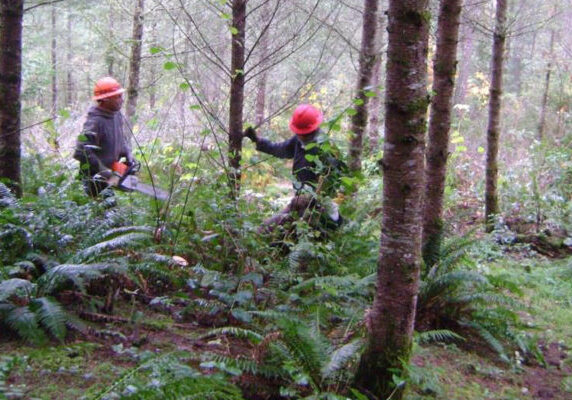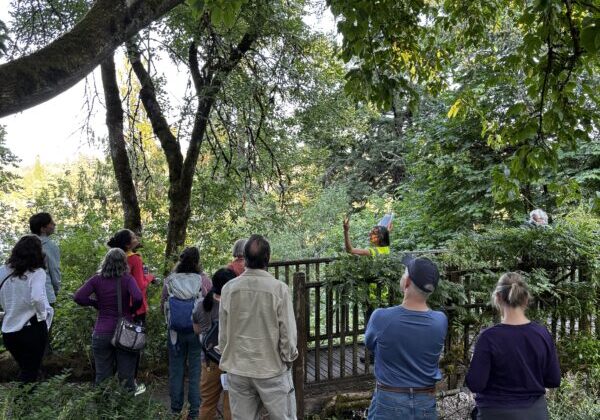By Martina Avendano, Field Conservation Intern
With the feeling of a good day completed at work, an episode of my favorite podcast on, and the comforts of air conditioning on a warm spring day in April, I was happy to start making my way home! Not long after merging onto the stop-and-go traffic of I-84, I felt a tickle on my ankle.
Earlier that day, I had spent some time in the woods recording forest measurements with Laura Taylor, Interim Forest Conservationist. We hiked and bushwhacked through the forest, hugging trees every couple of meters. And not just for fun! We were measuring and recording the diameter of trees along a transect to assess the forest’s health and maturity. This activity also gave a couple of ants the opportunity to crawl onto us, bravely defending their colony. By the end of the day, a few stragglers were still crawling on me.
I quickly realized that what I had brushed off my ankle wasn’t an ant. I took a quick peak and saw two little eyes staring back at me. I was carpooling with a Pacific tree frog (Pseudacris regilla)! Pacific tree frogs can be distinguished by the dark stripe across their eyes and their rounded toe pads. Just a normal day at work!

During the second week of May, I got to personally see the strong hold that garlic mustard can have on the landscape. At a site in the Green Hills neighborhood, working with Seasonal Conservation Technician Ari DeMarco, I was greatly surprised as I walked up to a solid stand of it. With my hori-hori in hand, I began pulling. Pretty soon I was in the depths of the garlic mustard, with twigs in my hair and a collection of catchweed (Galium aparine) across my sleeves. All in all, Ari and I collected three large bags of garlic mustard. It’s really great knowing that many more garlic mustard plants won’t set seed. Days like these make me really proud to be a part of this field!
Throughout these past months, I have had the opportunity to participate in various projects. From continuing the garlic mustard removal legacy of past interns, to visiting project sites and learning about restoration practices. Some of my favorite days have also involved crouching down in front of a new plant and looking for distinguishing characteristics to identify it. But best of all, I have really enjoyed getting the chance to work with everyone at West Multnomah SWCD. From Zoom meetings to getting out in the field and meeting in person.
Note to reader: My carpool mate was safely returned to the outdoors at a local park.



